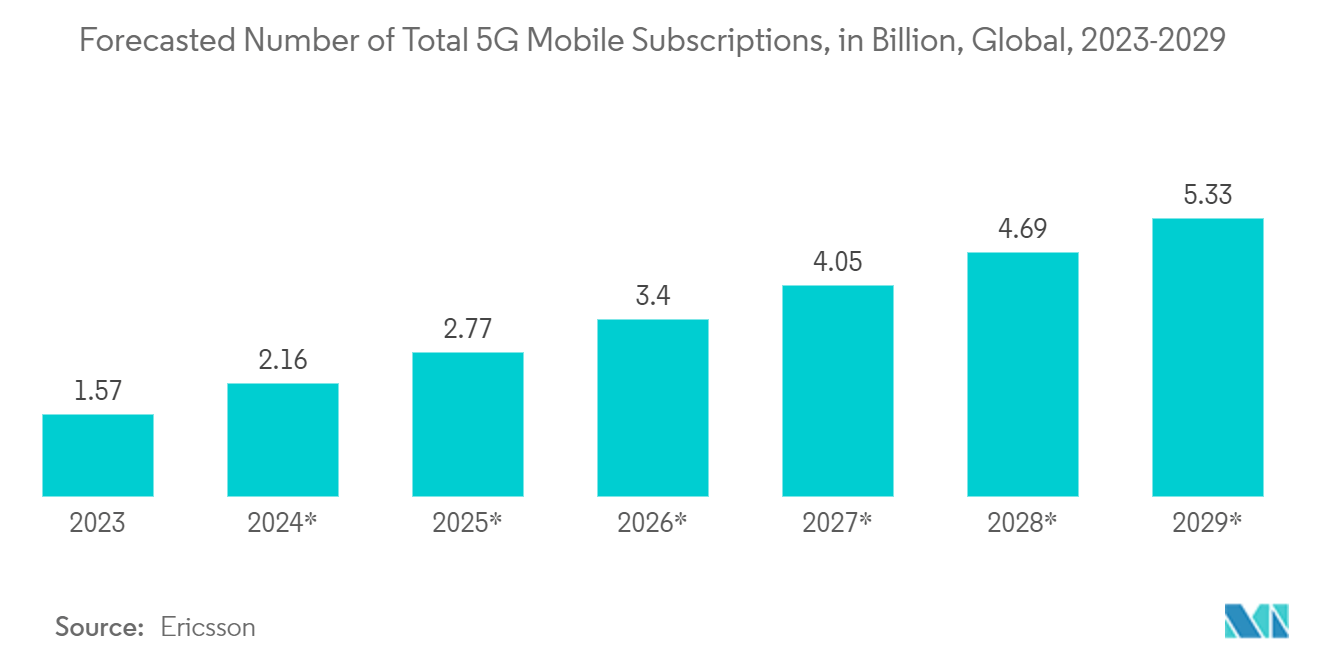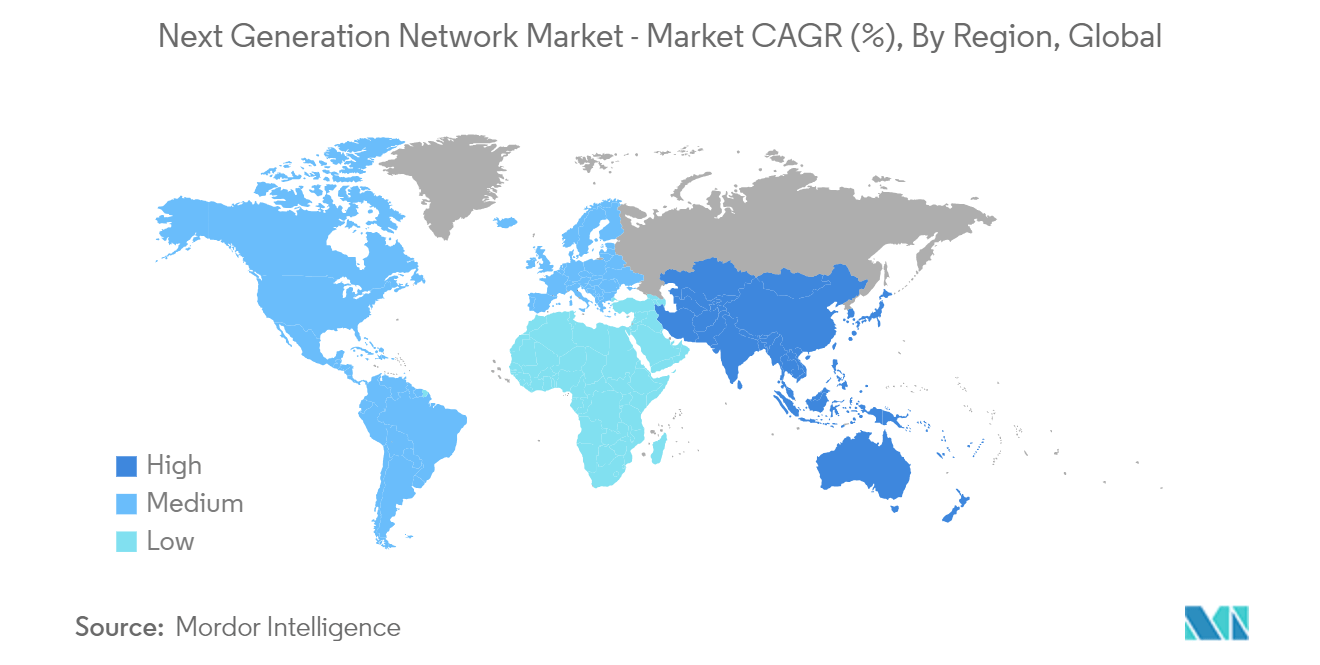Market Trends of Next Generation Network Industry
Hardware Offering Holds Significant Market Share
- Next-generation network (NGN) hardware comprises switches, routers, gateways, servers, and security devices designed to assist advanced communication technologies. These hardware components allow higher bandwidth capabilities, enhanced network security, faster data transmission, and seamless integration with emerging technologies like IoT, 5G, and edge computing. Cloud computing NGN hardware forms the backbone of modern digital infrastructure, easing efficient and reliable communication across diverse networks.
- The demand for next-generation network (NGN) hardware is driven by growing data traffic, higher bandwidth requirements for developing technologies, including IoT and 5G, growing cloud migration, security concerns, remote work, and edge computing.
- NGN hardware, including switches, routers, servers, and security devices, is essential for handling the surge in data volume, supporting bandwidth-intensive applications, ensuring network security, facilitating cloud-based services, enabling remote partnerships, and powering edge computing solutions. As the digital landscape grows, NGN hardware is critical in providing reliable, high-speed, and secure networking infrastructure to meet modern connectivity demands.
- Moreover, the growing 5G connectivity fuels demand for NGN hardware by requiring advanced switches, routers, and servers to assist higher bandwidth, low latency, and increased network ability. According to Ericsson, the total number of 5G subscriptions is expected to increase from 1.57 billion in 2023 to 5.33 billion by 2029.
- Based on region, Europe is expected to grow due to growing 5G connectivity and developments by market players such as product launches. For instance, in September 2023, EE launched the initial of its future strategic strategies for its home broadband service as part of its goal to become the United Kingdom’s most individual customer-focused brand.
- Collaborating with Qualcomm Technologies Inc., EE will roll out novel in-home hardware in the coming years that will feature Qualcomm Wi-Fi 7 platforms as part of its strategies to provide best-in-class home connectivity to clients throughout the UK, allowing them to be among the first in the globe to get admittance to the next generation of Wi-Fi. Further, various vendors in the market are involved in different strategies for a competitive edge, which is expected to drive the segment growth.

Asia-Pacific is Expected to Hold Significant Market Share
- The rapid growth in the development of 5G and 6G infrastructure in countries such as China, South Korea, and Japan is expected to drive market growth, creating the need for next-generation solutions as they help in network optimization through features such as network visualization, software-defined networking (SDN), etc.
- The next-generation network market growth is supported by the initiatives taken in various regional countries to meet digital goals by updating network infrastructures. For instance, in September 2023, the South Korean government announced the nation's K-Network 2030 program to promote cooperation between the public and private sectors in the R&D of next-generation networks, satellite communications, and quantum communications. Also, the program targets innovation in software-based networks and strengthening supply chains.
- The optical technology-based next-generation networks are rapidly being developed and implemented in Japan to establish optical core networks for the future of communication. In June 2023, NTT Corporation and Fujitsu partnered to conduct trials aimed at developing their next-generation optical core network in the country. Fujitsu's advanced optical transport platform, the "1FINITY Ultra Optical System," was selected as a verification system to support NTT's network expansion plans.
- Telecom companies started offering next-generation network services to reduce energy consumption and achieve high-capacity communication by converting electric signals into optical ones and catering to surging network traffic. In March 2023, Nippon Telegraph and Telephone Corp. (NTT), a Japan-based telecom company, revealed the availability of its first services to its corporate clients under an optical technology-based next-generation network initiative.
- The telecom and internet service providers are rapidly rolling out 5G networks in the Asia-Pacific and investing heavily in infrastructure upgrades to deploy high-speed, low-latency networks that can support a broad range of applications and services, driving the need for next-generation network solutions.


